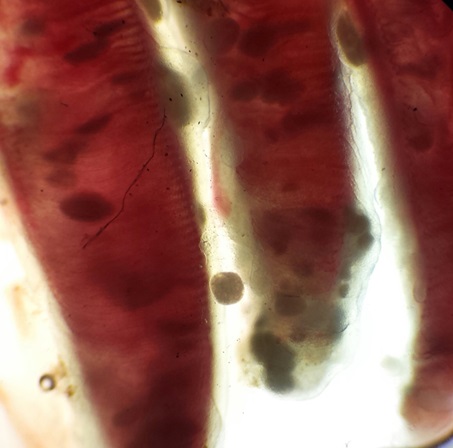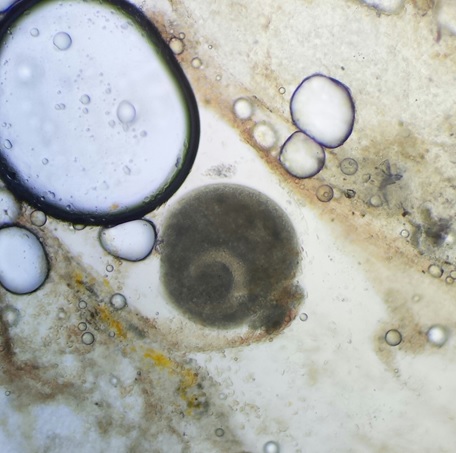Common Parasites of Koi and other Pond Fish
 Parasites are a common problem in pond fish such as koi and golfish that can lead to sick and dying fish. It is important to not only quickly identify but to find appropriate treatment for your fish so that fish can quickly recover. Here is a quick overview of the types of parasites that infect pond fish.
Parasites are a common problem in pond fish such as koi and golfish that can lead to sick and dying fish. It is important to not only quickly identify but to find appropriate treatment for your fish so that fish can quickly recover. Here is a quick overview of the types of parasites that infect pond fish.
External Parasites:
External parasites are those that reside on the surface of the skin or within the gill filaments of fish.
Clinical Signs:
- Increased mucus production on skin may make fish appear cloudy or bluish
- Pale Gills
- Respiratory Distress, gaping at the surface or near splashing water features
- Increased redness, sores or ulcers on the skin
- Flashing
- Clamped fins
- Red sores on the skin and fins
- Secondary bacterial infections can occur
Diseases with Similar Clinical Signs:
- Bacterial infections
- Poor water quality
- Trauma
Diagnosis:
It is important to identify which type of parasite is causing a fish's problems so that correct treatment can be provided as quickly as possible. The best way to diagnose external parasites in pond fish is by having a skin scraping and gill clip performed and examined under a microscope by a veterinarian with experience in fish.
Treatment:
Various anti-parasite medications exist to treat fish, both one that go directly into the water and ones that you feed to fish. Treatment will depend on the type of parasite infesting your fish.
 I
I
Ichthyophthirius multifiliis from a skin scrape in a koi
Types:
- Protozoa: Ich (Ichthyophthirius multifiliis), Trichodina, Chilodonella cyprini, Epistylis, Heteropolaria, Ichthyobodo necator
- Trematodes (Flukes): Skin Flukes (Gyrodactylus), Gill Flukes (Dactylogyrus)
- Crustaceans: Anchor worms (Lernaea cyprinacea), Gill Maggots (Ergasilus), Fish Lice (Argulus foliaceus)
- Freshwater Clam Larvae (Unionidae and Mutelidae species)
Internal Parasites:
Internal parasites reside within the fish's body, either within the digestive tract or within the actual tissues of the fish.
Clinical Signs:
- Reduced growth rate
- Reduced reproductive rate
- Intestinal inflammation
- Swollen belly
- Lethargy
- Muscle loss
Diseases with Similar Clinical Signs:
- Bacterial Infection
- Poor Water Quality
- Organ Failure (i.e. Kidney Failure)
- Egg Binding
- Tumors
Diagnosis:
Diagnosis of internal parasites depends on where the parasite is living. Those that are living in the digestive tract can be diagnosed by a veterinarian examining the fish's feces under a microscope. Internal parasites that invade tissue can be more difficult to find and often a surgical biopsy of the infected tissue or a necropsy of a recently deceased fish are necessary.
Treatment:
Just with external parasites, many different treatments exist for internal parasites as well. Your veteirnarian should be able to recommend the best treatment for your fish depending on the type of parasite involved.
Parasite Prevention
The best way to prevent your fish from contracting parasites is to make sure to always quarantine new fish from your exsisting pond fish for at least 30 days before adding them into your pond. More information on how to quarantine your new fish please click here. It's also good to have new fish examined by a veterinarian and checked for hidden parasites with a skin scraping and gill clip. It is not only important to make sure new fish doesn't carry parasites that may make your fish sick, but also new plants. Make sure to get plants from reputable or known sources or from nurseries where they are not grown exposed to fish at all. All plants should be rinsed thoroughly before they are added to the pond system.



